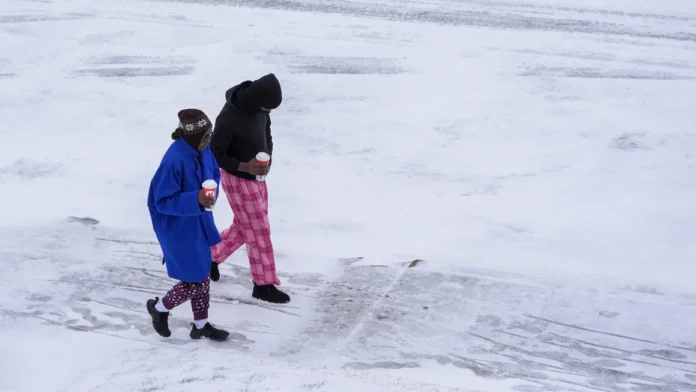It’s been an unusually cold winter across much of the United States — and the Arctic just won’t quit. This latest wave of frigid air marks at least the eighth blast from the Arctic this season, making this one of the coldest winters the country has seen in years.
In fact, this January was the coldest in the Lower 48 states since 1988. That’s a big contrast to the rest of the world, though. Globally, January 2025 was the warmest on record, with an average surface air temperature of 13.23°C (55.81°F), nearly a degree warmer than the 1991–2020 average. While much of the planet saw warmer-than-usual temperatures, the US stood out as one of the few cold spots.
So why is the US freezing while the rest of the world heats up? Scientists say it’s a combination of unusual weather patterns and the polar vortex behaving in unexpected ways. A key factor is a high-pressure system stuck over Alaska and northwest Canada, which is pushing freezing air south. This pattern, called a “blocking high,” reroutes the jet stream — the current of air that moves weather across the country — and sends cold Arctic air plunging into the US.
This winter’s blocking high has been particularly stubborn, sticking around longer than usual and forcing more cold air south. The result? One of the warmest winters Alaska has seen and a bitterly cold one for the Lower 48.
Adding to the chill is the polar vortex — a fast-moving band of winds circling the Arctic high in the atmosphere. When the polar vortex is strong, it keeps cold air locked up in the Arctic. But when it weakens or stretches into odd shapes, it lets that frigid air escape and spill south. This winter, the polar vortex has been unusually flexible, stretching and shifting repeatedly, which has helped bring wave after wave of Arctic air to the US.
This pattern has happened at least ten times this winter — with four cold spells in December, four more in January, and two so far in February. That’s a rare and remarkable frequency, according to weather experts.
Despite all this cold, scientists agree that winters overall are getting warmer as the planet heats up due to fossil fuel pollution. Extreme cold snaps like this may become less frequent over time, but when they do happen, they’ll likely still pack a punch. These events show how a warming Arctic can disrupt traditional weather patterns, making cold air outbreaks more unpredictable.
For now, though, Americans are just trying to stay warm as the Arctic keeps sending icy reminders of winters past.





